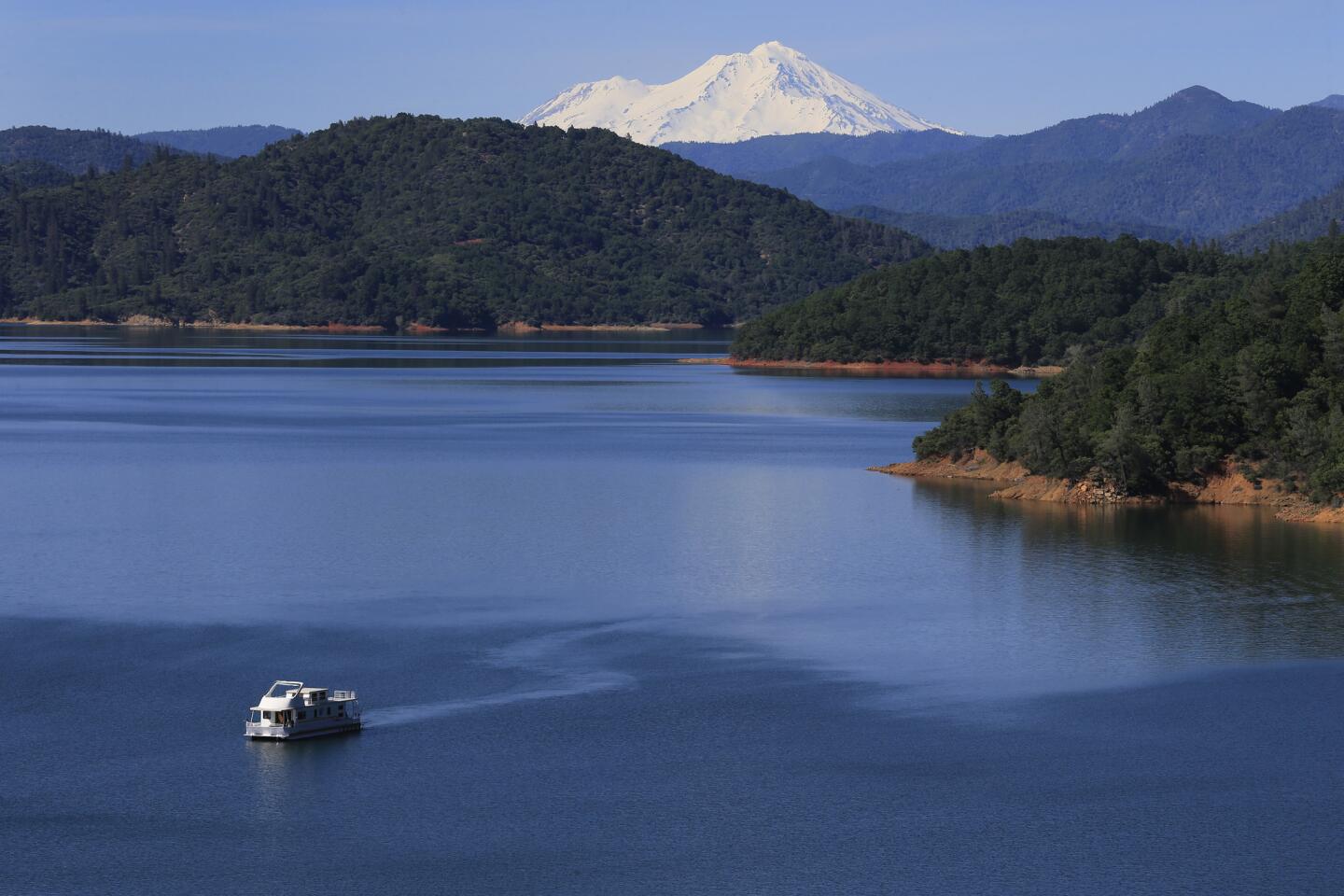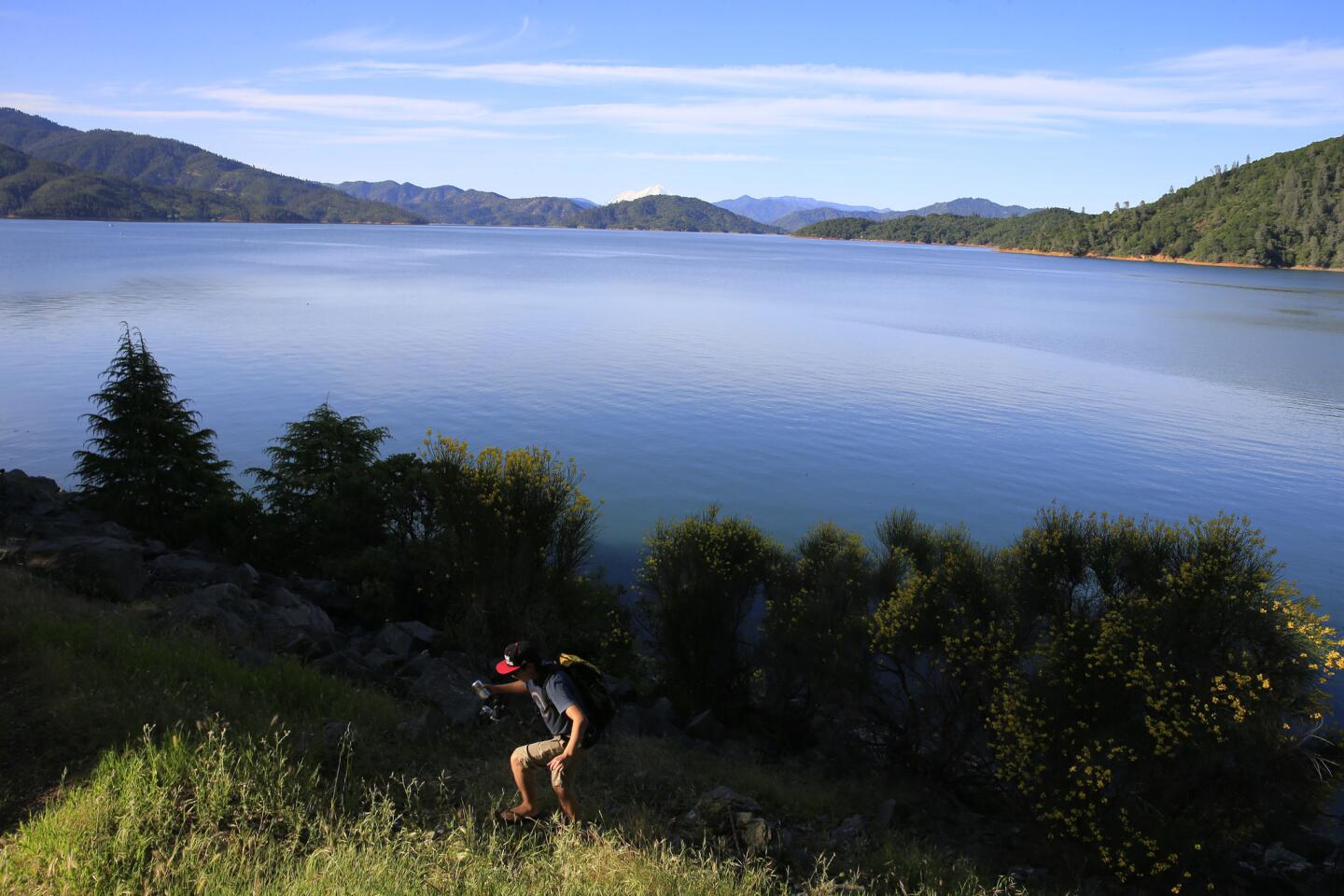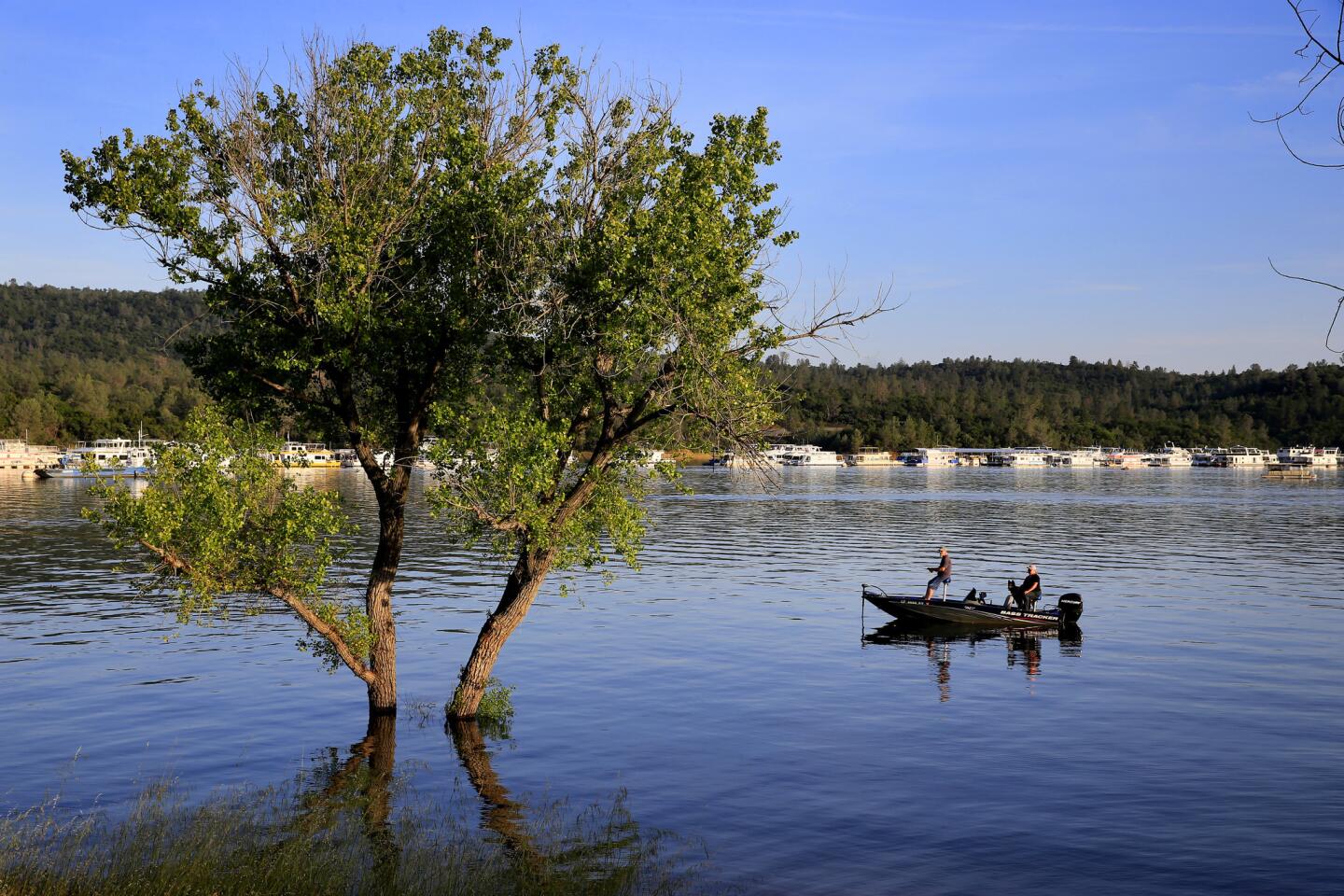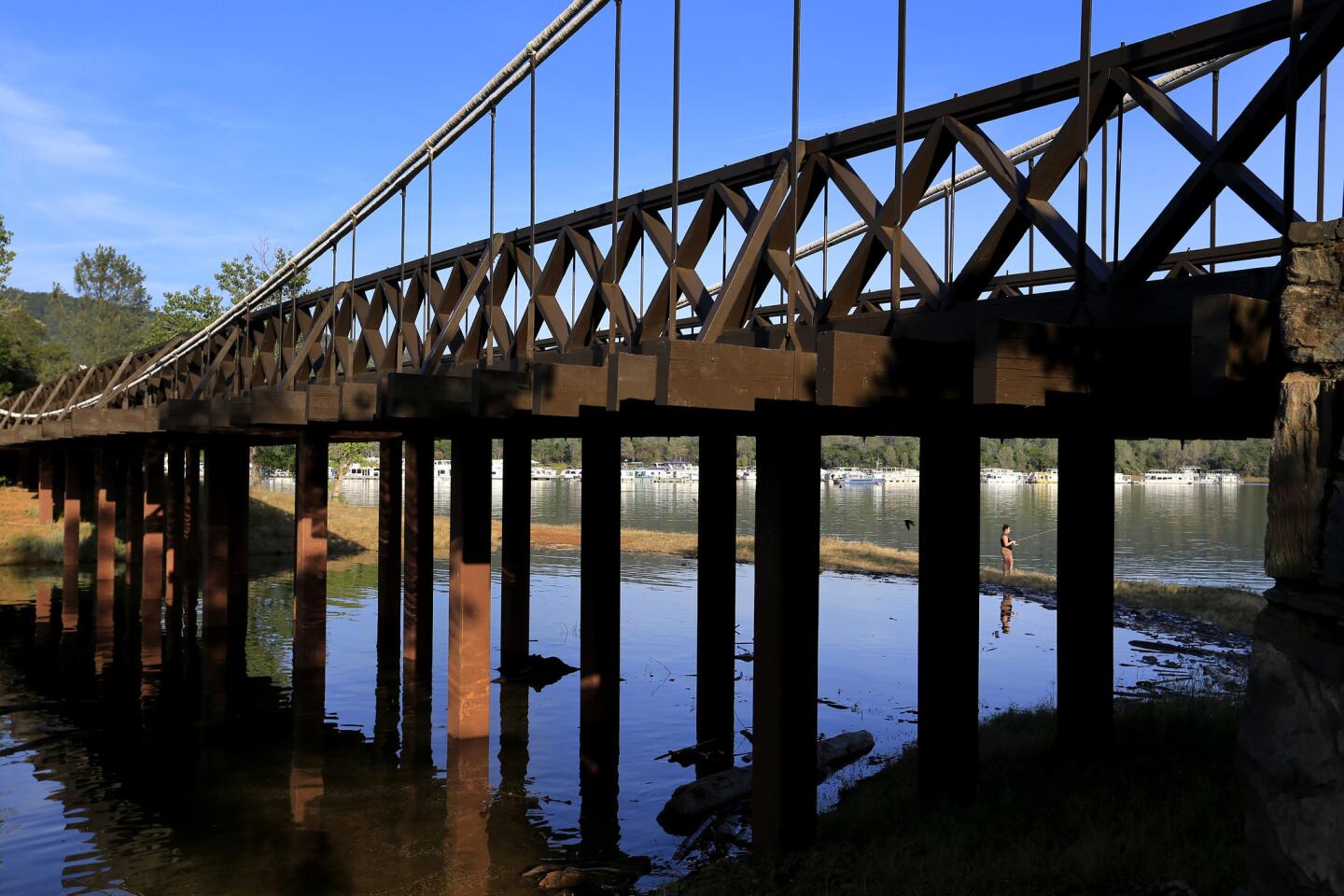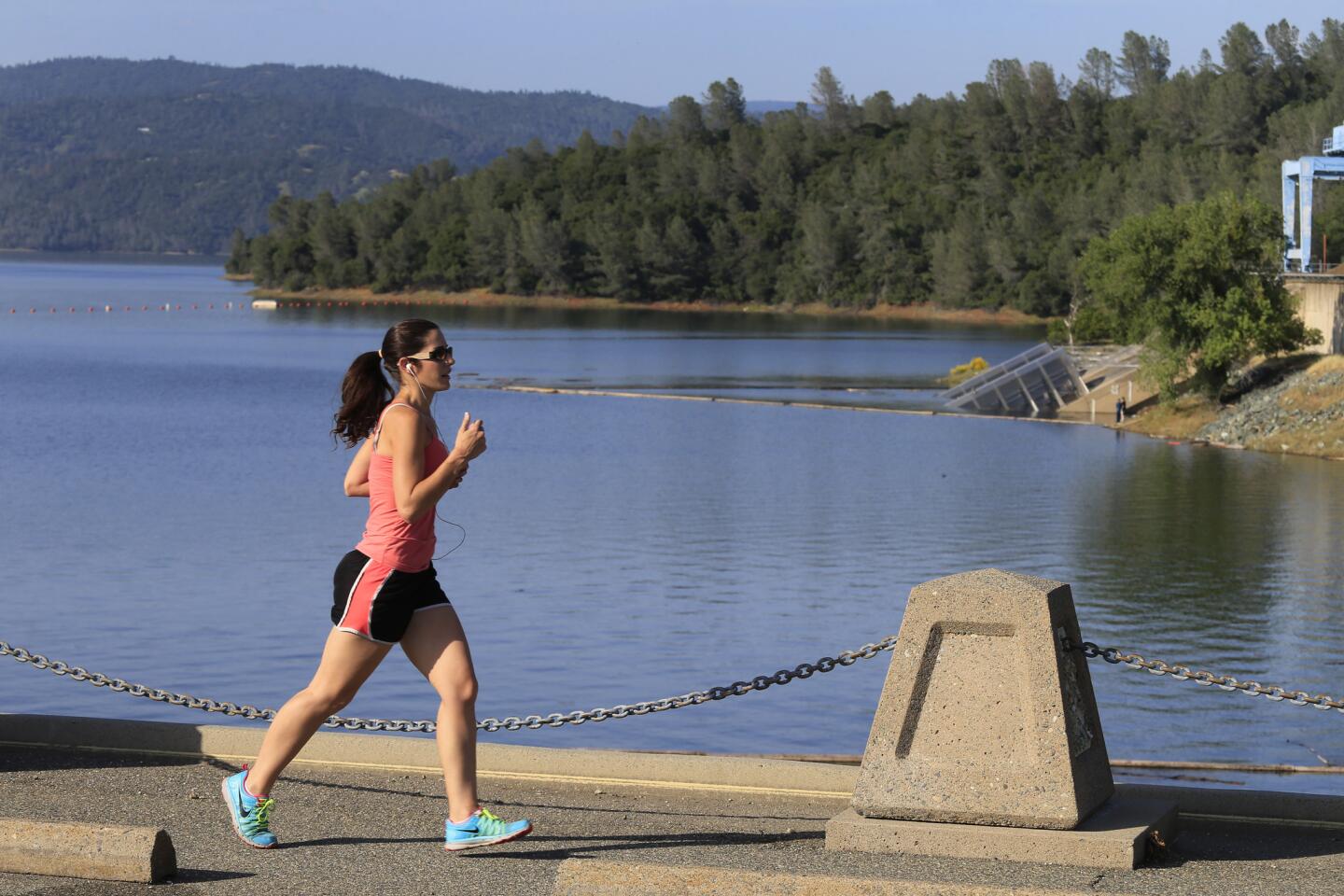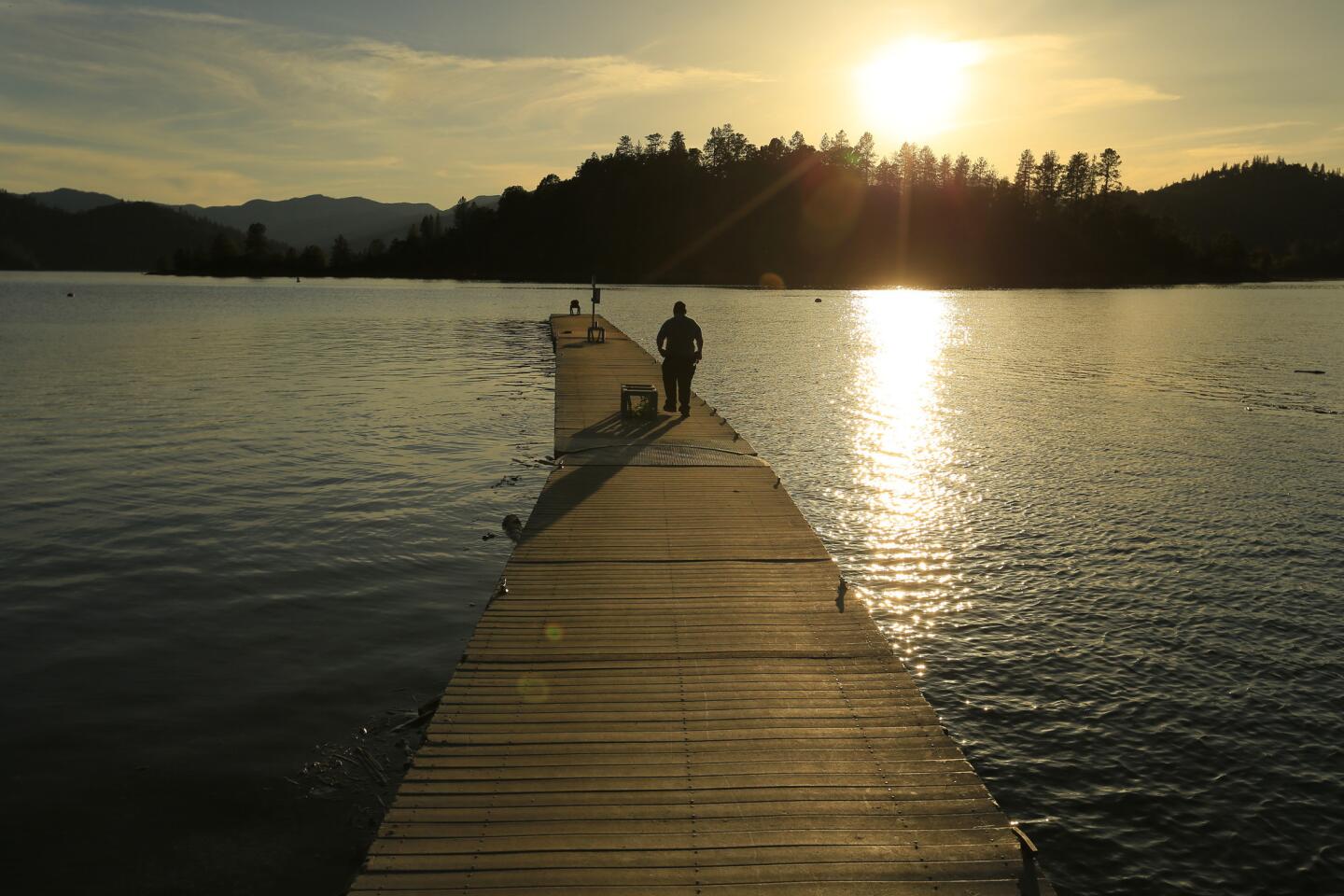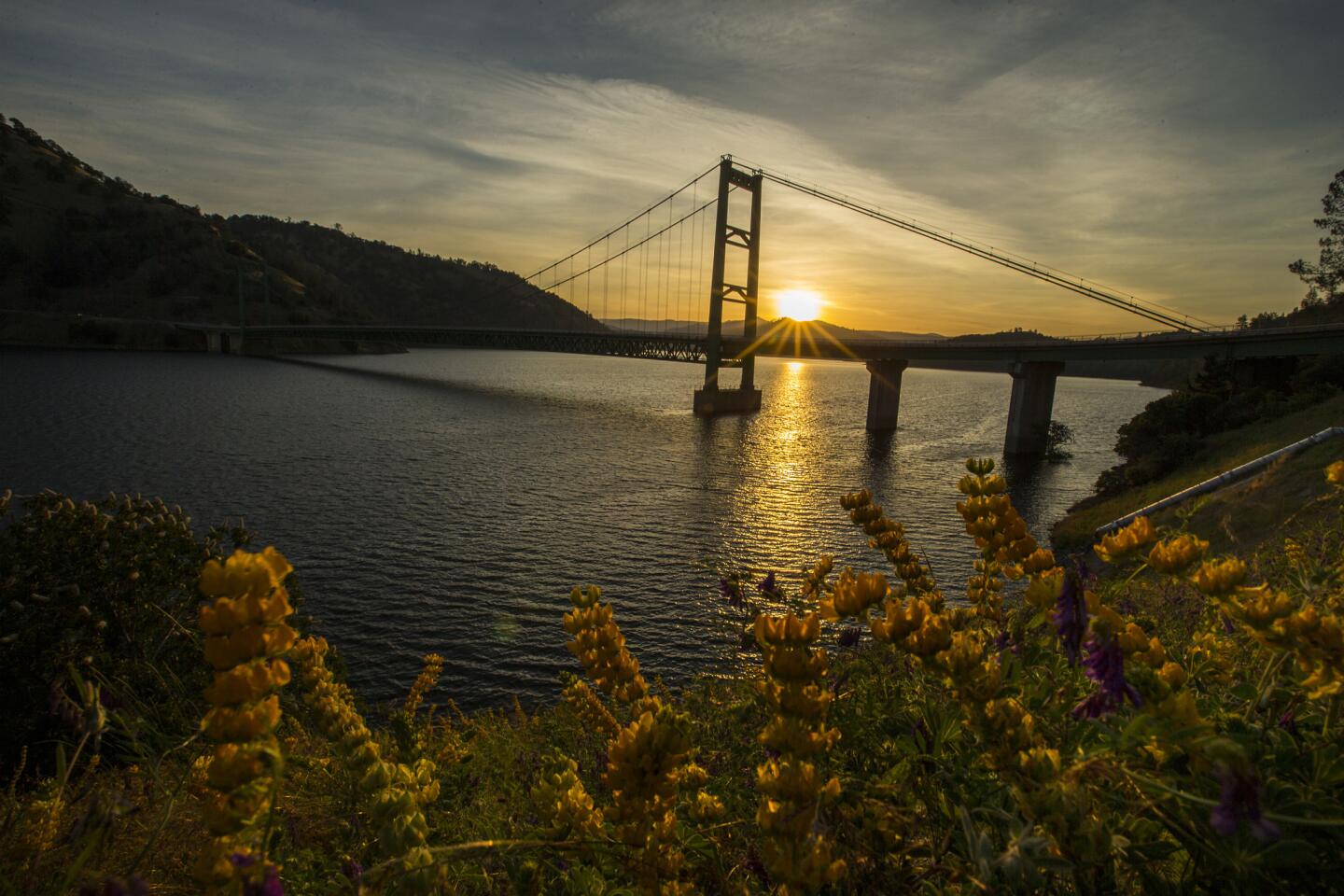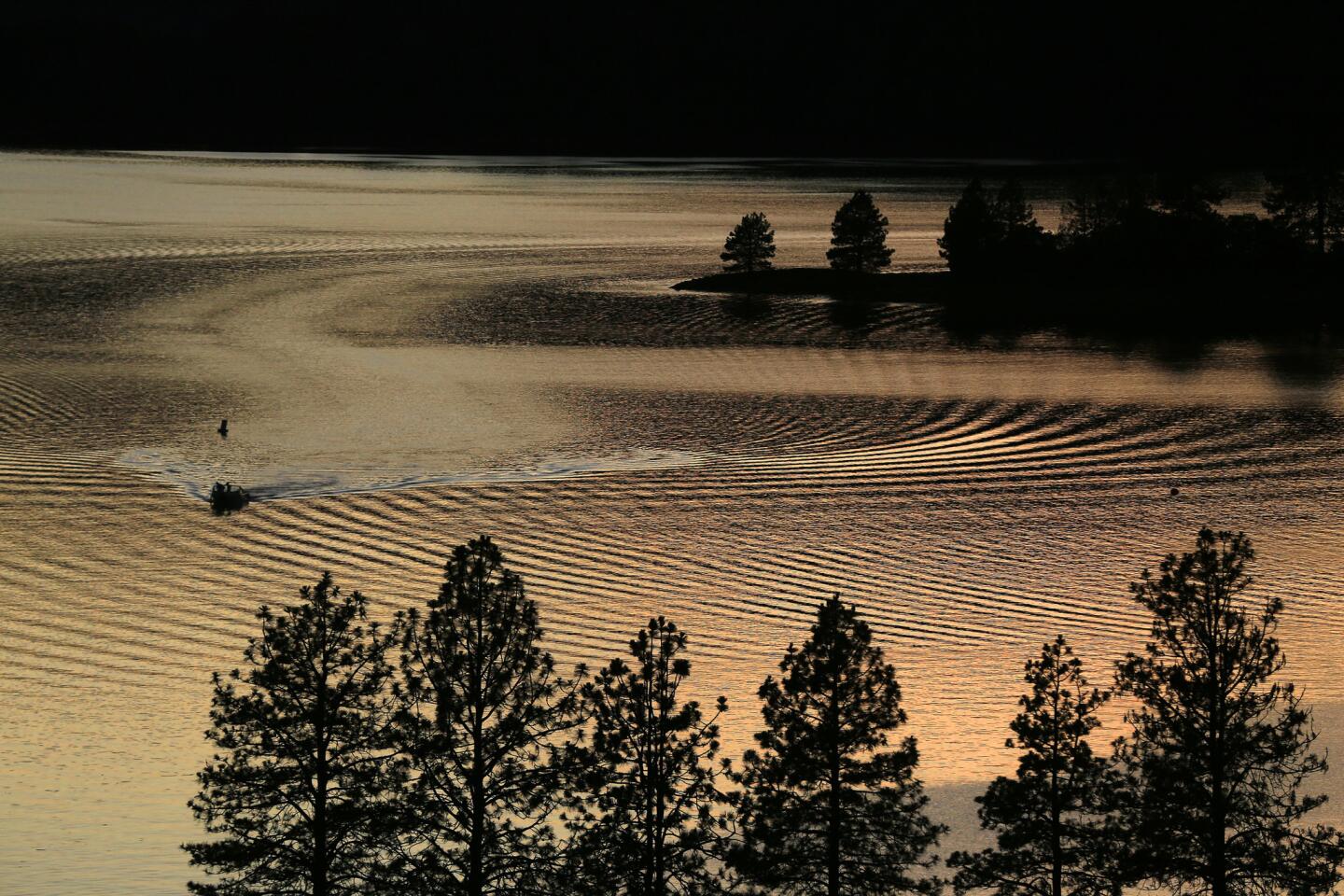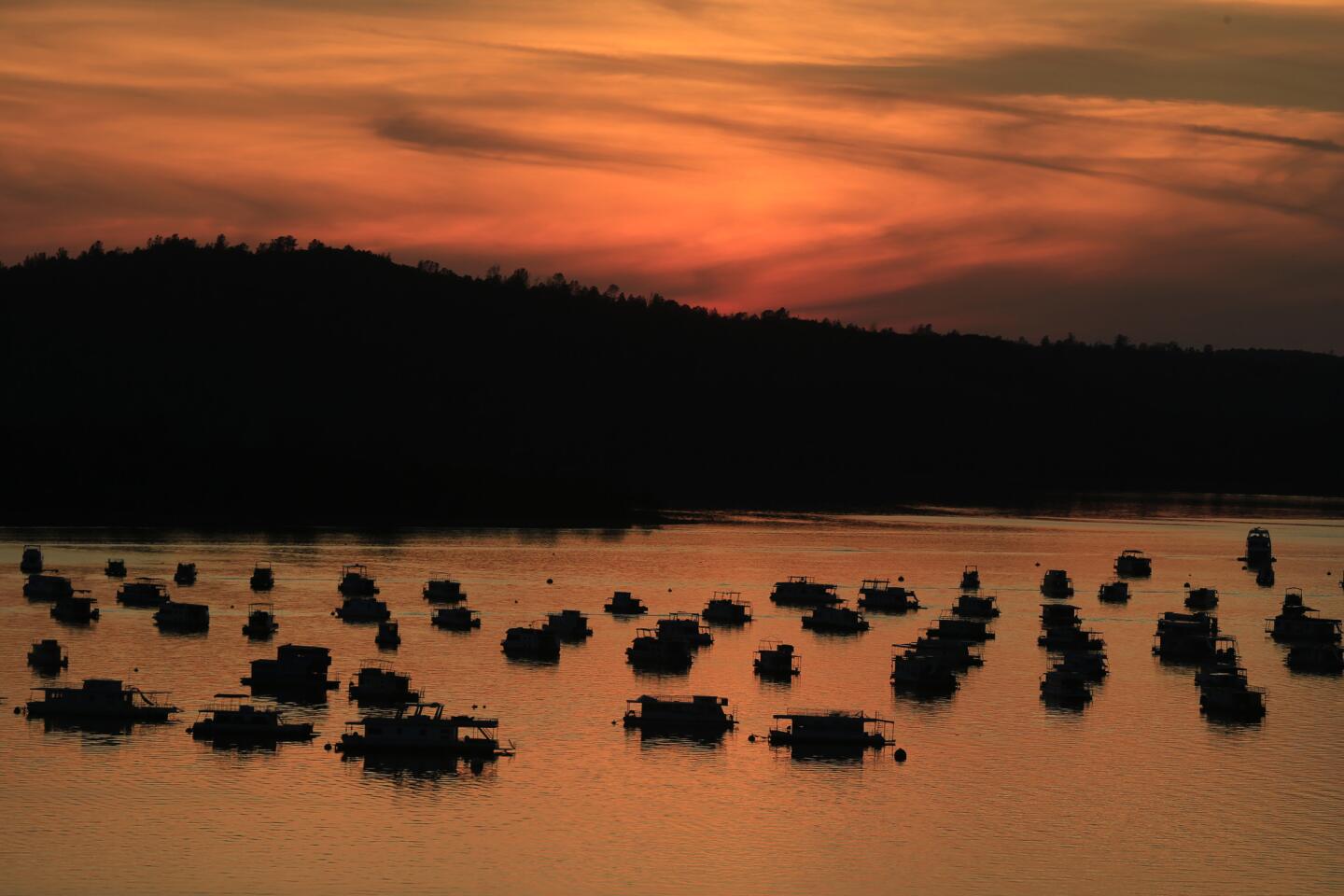California board allows water districts to set their own conservation targets
- Share via
For its first four years, the California drought spread its pain across most corners of the state.
The great peaks of the Sierra Nevada were snow-deprived. Central Valley agricultural fields lay fallow. And the trademark green lawns of Southern California suburbia slowly turned brown.
But this summer is going to be different. A strong series of storms have left parts of Northern California rehydrated, with reservoirs brimming with water and once brown and dry hillsides radiating green again. But to the south, residents are enduring another record-dry year.
To deal with the dichotomy, state regulators on Wednesday approved on a 4-0 vote new water conservation rules that for some parts of the state will loosen the strict savings requirements that Gov. Jerry Brown imposed a year ago.
Local water districts will soon be allowed to set their own savings targets based on water supply and demand forecasts tailored to their areas. That means that places that received a lot of rain — and communities that purchase or are entitled to water from sources there — are likely to see fewer restrictions, while dry areas without water from those replenished supplies are likely to suffer though another summer of continued conservation.
Regulators said the changes are necessary to account for the dent the rain and snow made in the drought situation in Northern California, where some residents have questioned why they must continue to limit lawn watering and car washing.
Some experts, however, fear the state is sending a mixed message that obscures the “we’re all in this together” campaign that state officials have tried to foster.
“I do understand the need for flexibility,” said Peter Gleick, president of the Pacific Institute, a water think tank based in Oakland. “The problem with too much flexibility is ... it risks reopening regional conflicts. It risks the people still working hard to conserve water looking at their neighbors who aren’t conserving water and thinking, ‘What’s going on here?’”
Many Northern California cities and towns hit by heavy rains and snow are likely to be able to lower their targets. But even suppliers in Southern California, who largely missed out on El Niño storms, could argue for significant relief.
Because California’s water storage and delivery system is so vast, varied and complex, water watchers warned that the new provisions could create stark disparities between cities.
California’s water system was designed so that water from rain and snow in the north can be delivered to urban areas in the south, where much of the state’s population resides. So, many places in Southern California that suffered through a dry winter will benefit from the north’s wetter weather and be able to ease up on conservation, too.
The State Water Project, for example, draws from reservoirs such as Oroville. Oroville and California’s other massive reservoir, Shasta, are both more than 90% full. Another major reservoir, Lake Folsom, swelled to the point that officials had to release water to prevent flooding earlier this winter.
The growing supply has allowed officials to up the State Water Project allocation to 60% of requests, the highest it has been since 2012. It is a primary source of water for the Metropolitan Water District of Southern California, which delivers water to parts of Los Angeles, Orange and San Diego counties.
The new state regulations are also likely to benefit agencies such as the Coachella Valley Water District. Because the district’s customers use relatively high volumes of water — in part to keep golf courses green in the desert — the district was assigned a 36% reduction target last year. State regulators subsequently fined the district $61,000 for perennially failing to meet it.
But the Coachella Valley Water District gets much of its water from an underground aquifer that is so vast, federal officials who once tried to measure its capacity gave up.
Under the new rules, the district could theoretically argue that it has plenty of water in that aquifer to meet customers’ demands and should no longer be required to conserve.
“We’re going to look at supply and demand and we’re going to submit the numbers that are true and accurate,” said Heather Engel, the district’s director of communication and conservation. “We’re not going to lie. For [Coachella Valley Water District], we have a very strong supply, so I suspect we won’t have a 36% mandate.”
By contrast, water districts dependent on still suffering reservoirs, such as New Melones in the Central Valley, could be forced to set their conservation targets higher because their supplies remain diminished. Communities in that region that rely on groundwater that has dried up because of the drought are also unlikely to see much relief.
More than a year ago, Brown ordered the State Water Resources Control Board to devise a way to achieve the state’s first mandatory 25% reduction in urban water use.
The system the board developed spread the burden across all 411 urban water districts; each district had to cut back, though not by the same margins. To set the targets, the water board considered each agency’s history of per-capita water use. Heavy users were told to reduce their usage by as much as 36% compared with 2013; lower users had to cut as little as 4%.
Under the new regulations, local agencies will set their conservation targets based on their ability to meet demand if there are three more severely dry years. Water districts will “self-certify” their level of supply and submit their data to the water board, which must ultimately approve the conservation targets that districts propose.
If, for example, a supplier predicts that it would need 10% more water to meet demands three dry years down the road, the supplier will be given a 10% reduction target. Conversely, if a supplier can prove it will have enough water to meet expected demands in 2019, it can set a conservation standard of 0%.
“The goal here is to back off a little and say, ‘OK, it’s not the ... emergency it was, and so we’re going to move to the Ronald Reagan model of trust but verify,” said Max Gomberg, the water board’s climate and conservation manager.
The plan concerns some.
See the most-read stories this hour >>
Sara Aminzadeh, executive director of California Coastkeeper Alliance, said some water suppliers have openly questioned the need for conservation, so “putting the power in their hands makes me nervous.”
“What do we think Beverly Hills is going to be proposing in terms of conservation?” she said. “I think it’s a risky approach, especially as we head into the hotter summer months.”
Therese Kosterman, a spokeswoman for Beverly Hills, said the city “is evaluating” the water board’s new guidelines and officials will set any new savings target “with the goal of encouraging maximum water conservation and efficiency and maintaining a permanent state of vigilance over water use.”
Lester Snow, executive director of the California Water Foundation and former head of the Department of Water Resources, said he would favor a system in which all districts must cut their consumption 10%, “and then go from there.”
Gomberg acknowledged that regulators are likely to see a group of agencies set their conservation targets at zero.
“No one wants to publicly report that their water supplies aren’t able to withstand drought,” he said. “They have their own pressure for painting a rosier picture than is actually warranted.”
But, he continued, state regulators cannot continue to use their power “to tell people where it’s green ... you need to keep conserving at 28%.”
ALSO:
Drought harming water quality in inland San Diego County
Skelton: So the drought has you watering less? It won’t matter much
Sen. Dianne Feinstein pushes Senate subcommittee for water bill to address California’s drought
Twitter: @ByMattStevens
UPDATES:
5:35 p.m.: This article was updated with comments from Therese Kosterman, a spokeswoman for Beverly Hills.
5:20 p.m: This article was updated with news that the California regulators had approved on a 4-0 vote the new water conservation rules.
This article was originally published at 3:02 p.m.
More to Read
Sign up for Essential California
The most important California stories and recommendations in your inbox every morning.
You may occasionally receive promotional content from the Los Angeles Times.
